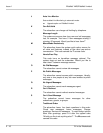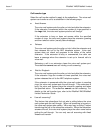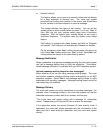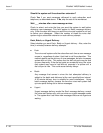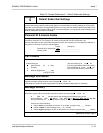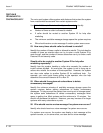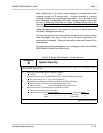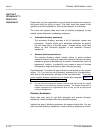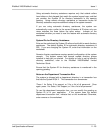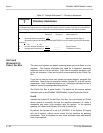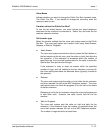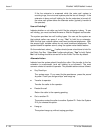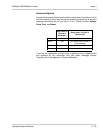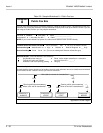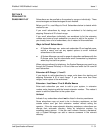
2 - 24 Fill in the Worksheets
Issue 1 EliteMail VMS/EliteMail Limited
S
ECTION
7
W
ORKSHEET
7:
D
IRECTORY
A
SSISTANCE
People who call your organization may not know the extension number of
the person they are trying to reach. The caller must then speak to the
operator to find the extension or look up the extension in a directory.
The voice mail system offers two kinds of directory assistance to help
outside callers determine a subscriber extension:
Automatic directory assistance
The automatic directory provides a list of subscriber names and
extensions. Outside callers get a subscriber extension by spelling
the first three letters of the last name. Outside callers must have
letters on their touchtone keypads to use automatic directory
assistance.
Numeric directory assistance
The numeric directory allows outside callers to press numbers
instead of letters to look up a subscriber extension. Numeric directory
assistance groups subscribers by a common characteristic (such as
department, location, or schedule), and creates a menu of choices
that assign a single touchtone to each directory grouping.
Use Worksheet 7 to select the type of directory assistance to offer outside
callers. Or, if you are not using directory assistance for this application,
write that on the worksheet, and skip to the next worksheet. If you are
using numeric directory assistance, you should also complete Table 2-11
Sample Worksheet 11 – Message Groups
.
You can also use transaction boxes to set up other call routing for outside
callers who do not know the extension number. The system comes with a
sample transaction box (Departments Box) to help you set up special call
routing to departments.
Directory Assistance
Some sites may want to use both automatic and numeric directory
assistance if some outside callers have lettered keypads.
Indicate the type of directory assistance the system should offer. You can
offer automatic directory assistance, numeric directory assistance, or both.



